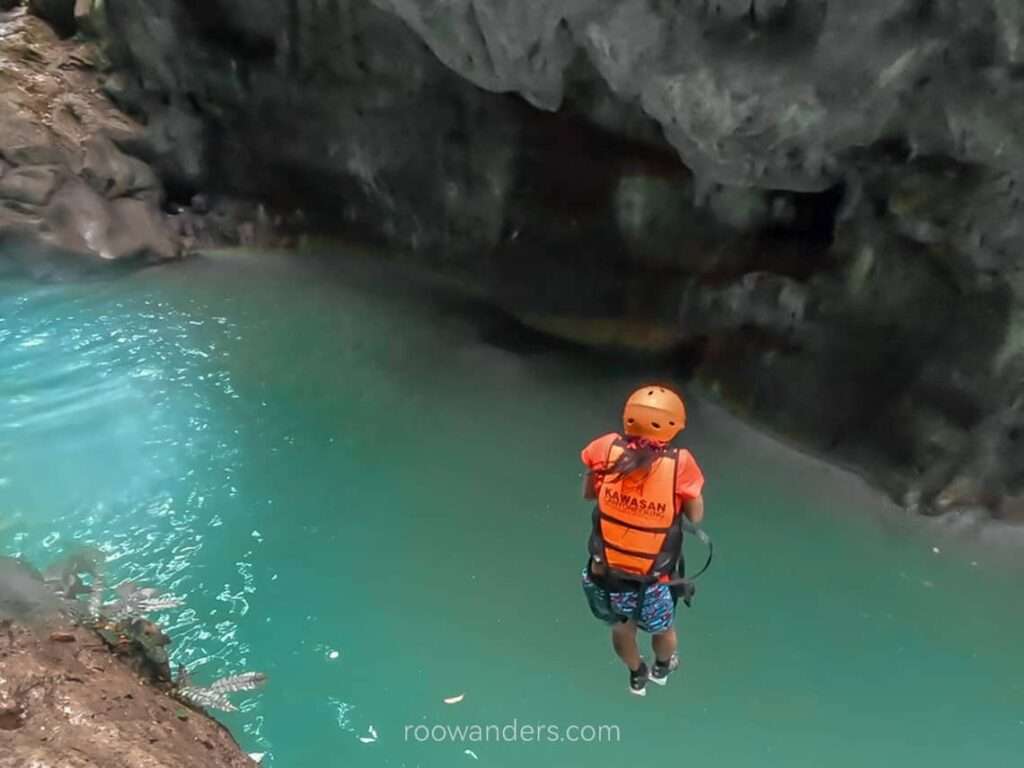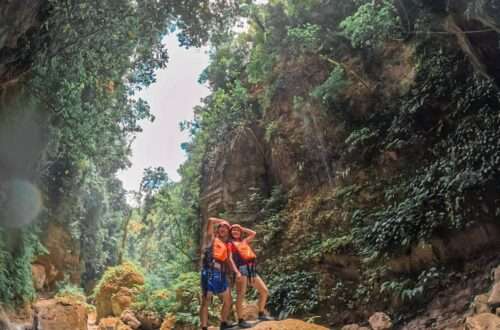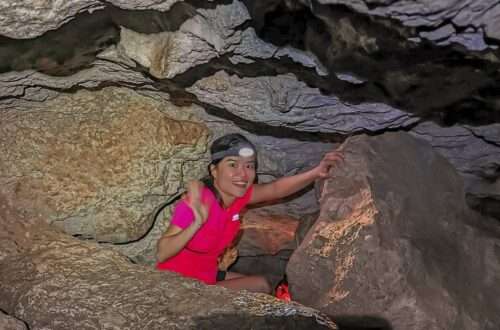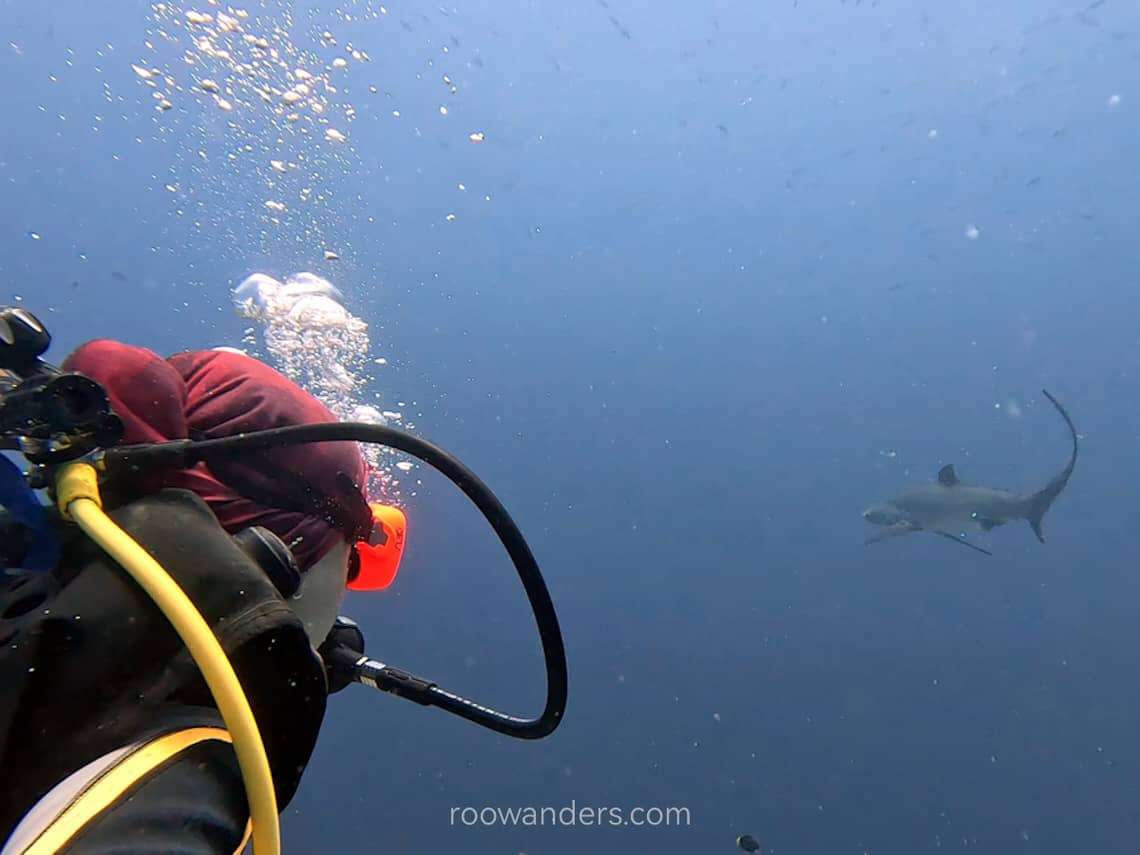
My Marvellous Malapascua Experience
Malapascua, north of Cebu, is a beautiful island replete with powdery white beaches surrounded by painfully clear waters.
As the first attraction in my week-long itinerary around Cebu, Malapascua is, in hindsight, an excellent place for a retreat away from the busyness of city life. I saw no cars. People get by on motor or foot, and you can literally immerse yourself into its rich marine ecosystem from the coast.
We spent almost two days in Malapascua, mostly catching sight of the rare and photogenic thresher sharks.
Thinking of visiting Malapascua soon? Know that it isn’t easy to get there by public transport! But I’ve prepared all you need to know to ease your concerns here in this post. Let’s dive in!
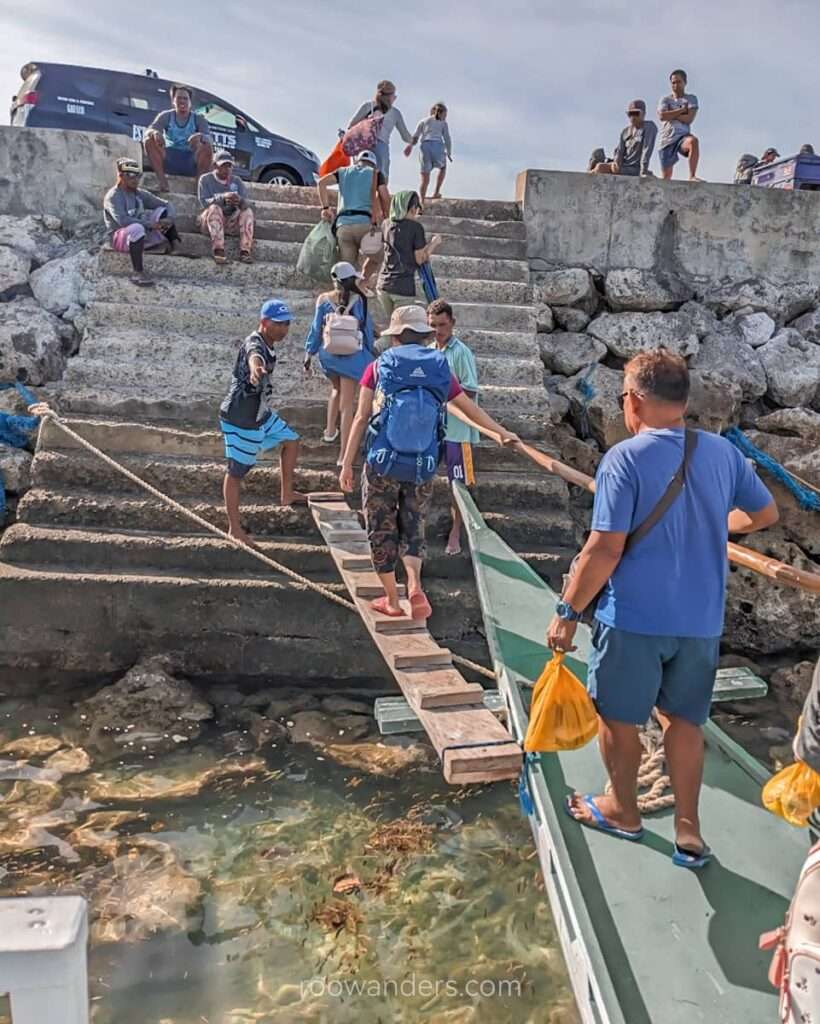
I visited Malapascua and Cebu in April 2024. This post contains affiliate links that cost nothing to you but support my blog! It may also be updated periodically. Cheers!
Best Time to Visit Malapascua
As written in my Cebu 101 Guide post, the best time to visit Cebu and Malapascua is during the dry months of Jan to May, unless you do not mind the wetter, but slightly cooler, and possibly cheaper, months of Jun to Dec.
Jan to May are the dry months. I visited in April, and there was no rain for the entire week. It was just hot and dusty. Get proper sun protection or you’ll risk getting sunburnt.
Jun to Dec tends to be wetter with higher rainfall, but everything else remains pretty much the same.
Hola to all my bubble-blowing friends! You can scuba dive in Malapascua – famous for its thresher sharks – all year round!
Getting to Malapascua
Be prepared for a long trip from Cebu City to Malapascua!
From what I have gathered, all buses lead to Cebu City. So it doesn’t matter which part of Cebu Island you’re from, you’ll have to transit at the bus terminals of Cebu City to reach other parts of Cebu.
Malapascua is an island north of Cebu. You’d need two different kinds of transport to reach there from Cebu City: (1) a land transport to Maya New Roro Port; and (2) a boat to Malapascua.
It could take as long as 7 hours from Cebu City to Malapascua, depending on the form of land transport you’re taking.
Take note also that the port to Malapascua is no longer Maya Port, but Maya New Roro Port. There is quite a distance between both of them. You need not worry you’d be transported to the wrong port if you’re taking public transport.
Land Transport: Bus, van, private car
As I researched for my itinerary before my trip, I found two public transport options: the big lime-green Ceres bus, and vans. The costs reported from other blogs and sites were within the range of P150 to P210.
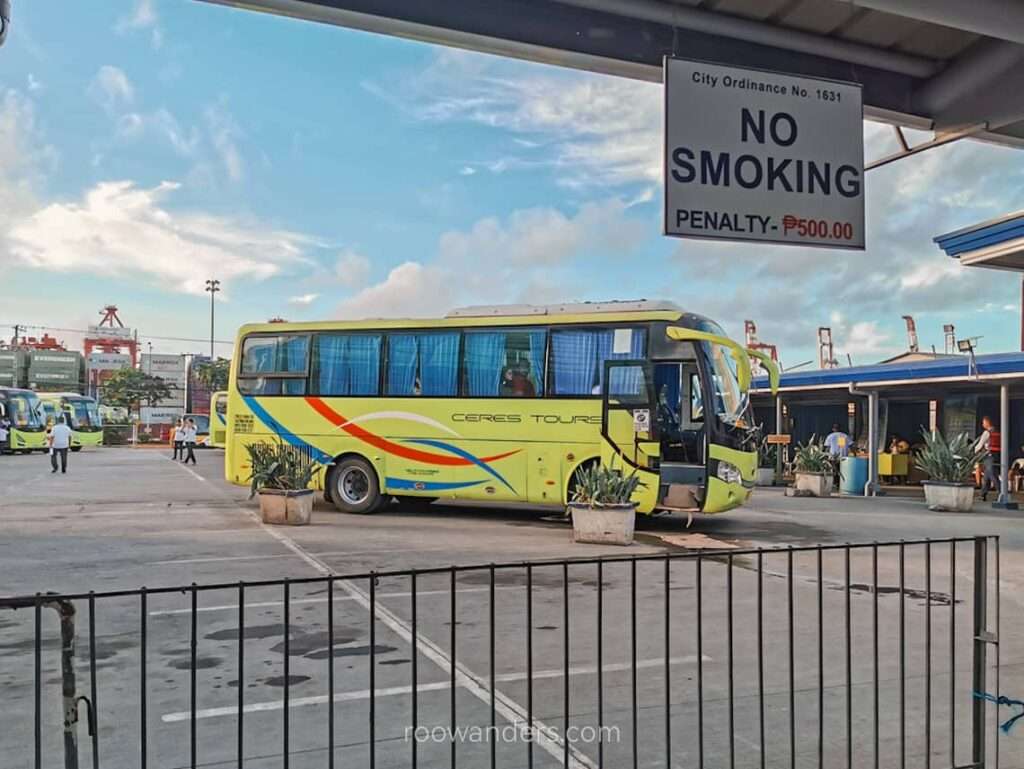
Note that the price, as of April 2024, is P310 for Ceres, which typically takes 6 hours to the new Maya Port, with many stops in between. As these buses are big and can take 30 or more passengers, it takes time for them to fill up.
We went with the vans operated by enterprising folks for P350 each, with a travel time of around 4 hours.
I say enterprising as they could squeeze in 16 willing adults at the back together with their luggage when the van contains only 12 permanent seats, to begin with. Custom-made seats fill the empty spaces to accommodate the remaining 4 passengers. But this is what most time-strapped folks would go for – P40 more to shave off 2 hours of journey time.
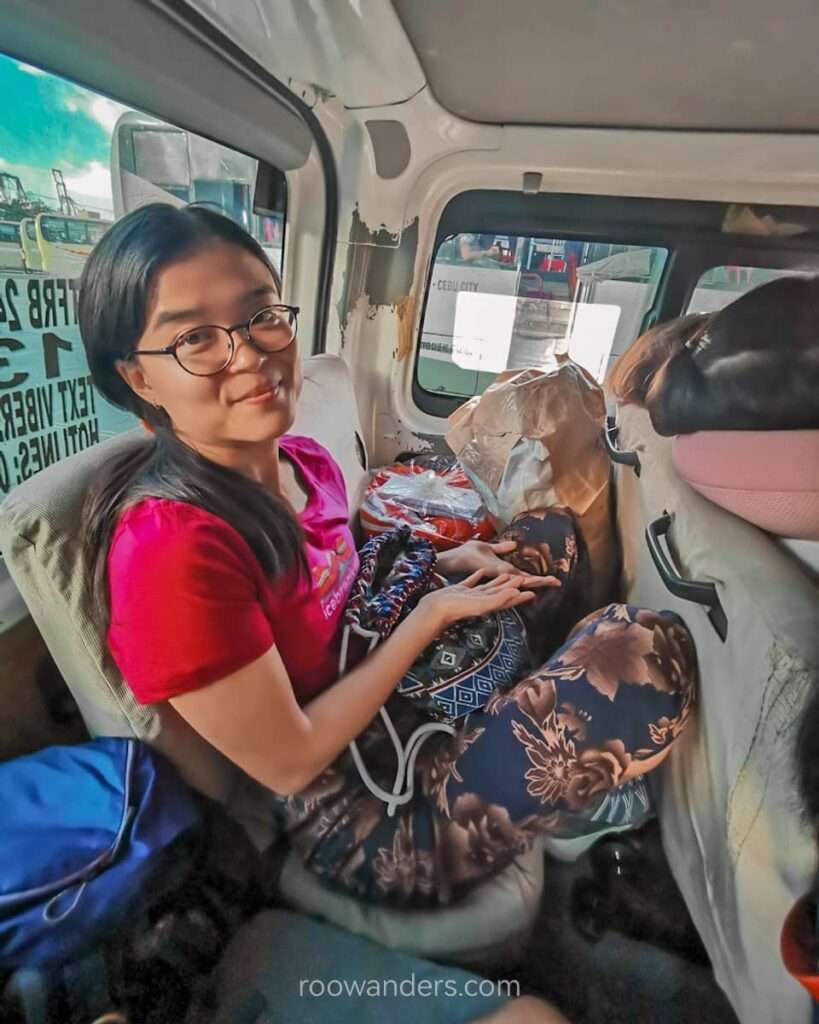
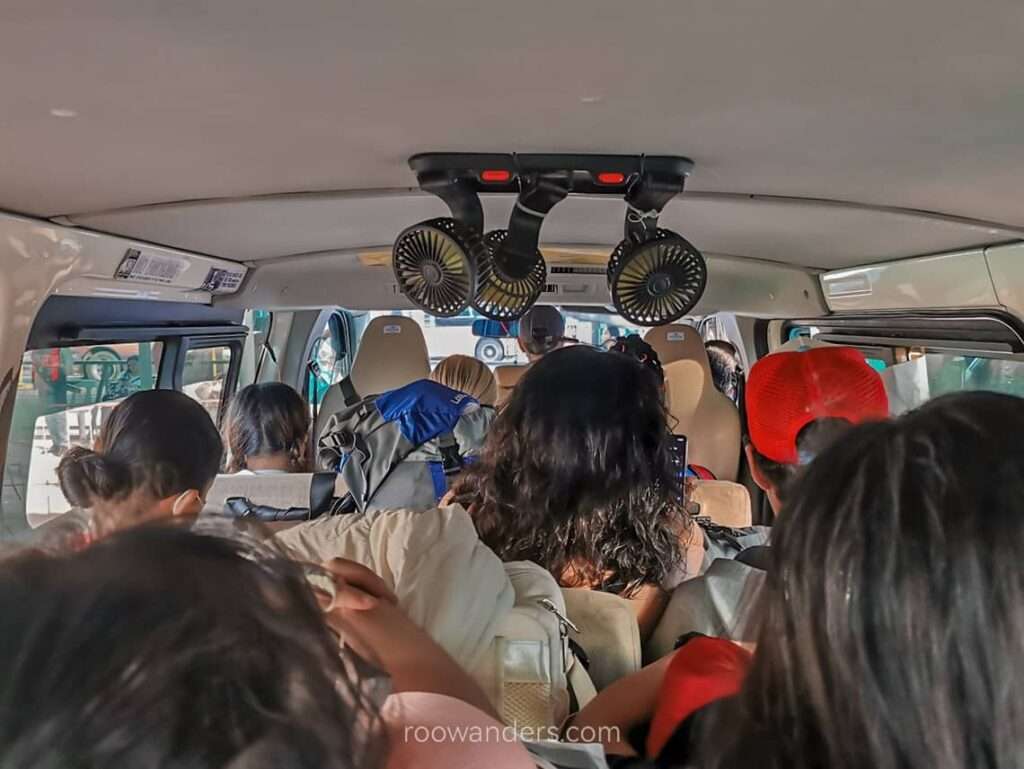
As a petite-sized Asian, I find the ride not comfortable, but comfort depends on factors like the van, the passenger’s mood, and their size. We took the 1 AM budget flight from Singapore!
The van for our return journey to Cebu City had considerably newer and better-cushioned seats. But for maximum comfort, it is ideal to snatch the two seats at the front beside the driver. You have more leg space, toggle with the aircon and have an unobstructed view of the road.
If you are very time-strapped, worried about the description of your van journey, or don’t mind spending more money, go with a private car or van. Price ranges between P6300 to P7500. You could arrange to have them pick you up directly from Mactan International Airport. Some accommodations in Malapascua could help with transport arrangements as well.
Environmental Fee
Once you’re at the new Maya Port, pay P120 per person of environmental fee in a small office. Keep the small acknowledgement paper to be eligible to buy the boat ticket to Malapascua.
Boat
Leave the office and queue at one of the container boxes – it was container boxes when I was there in April 2024 – for the boat ticket. It costs P200, and the journey takes about an hour.
The waiting time to board the boat and leave for Malapascua depends on the number of passengers. We didn’t wait that long as there was already a crowd waiting before us.
Boarding the boat – or bangka – is an experience – we had to walk on a narrow wooden plank! – so was our ride. We sat in the middle of the bangka on the box housing the motor. There are seats at the sides of the bangka, but these are usually not fully shaded and can get very warm.
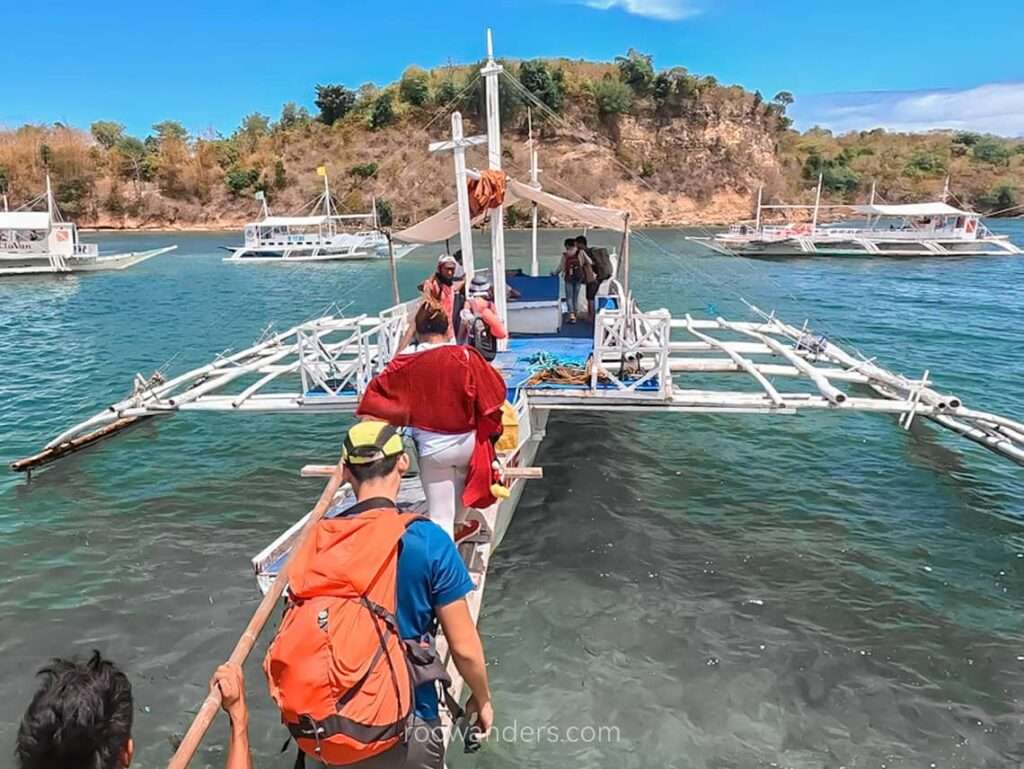

As with the vans, the folks here will also try to accommodate as many people as they can. Our journey back to the new Maya Port had bags piled up in the middle of the boat, mixed with a couple of passengers who chose to lie or sit directly on the floor or their bags.
I spied a stash of faded life jackets strung on a pole above us.
Travelling within Malapascua
Malapascua may look small, but it is infeasible to rely on walking to get around the entire island.
However, most of the attractions or activities are clustered near the pier in the southern part of the island, and you can easily navigate to your lodging, find food, or your dive shop on foot.
The houses on Malapascua are built without a proper plan. Narrow alleys separate one property from another, and these are where the motor and man go. There are no proper roads. Rather, the pathway shared by the motor and man is powdery sand that can be tiring to walk or ride on. Some locals spray water on the roads outside their shops to harden the sand and ease movement.
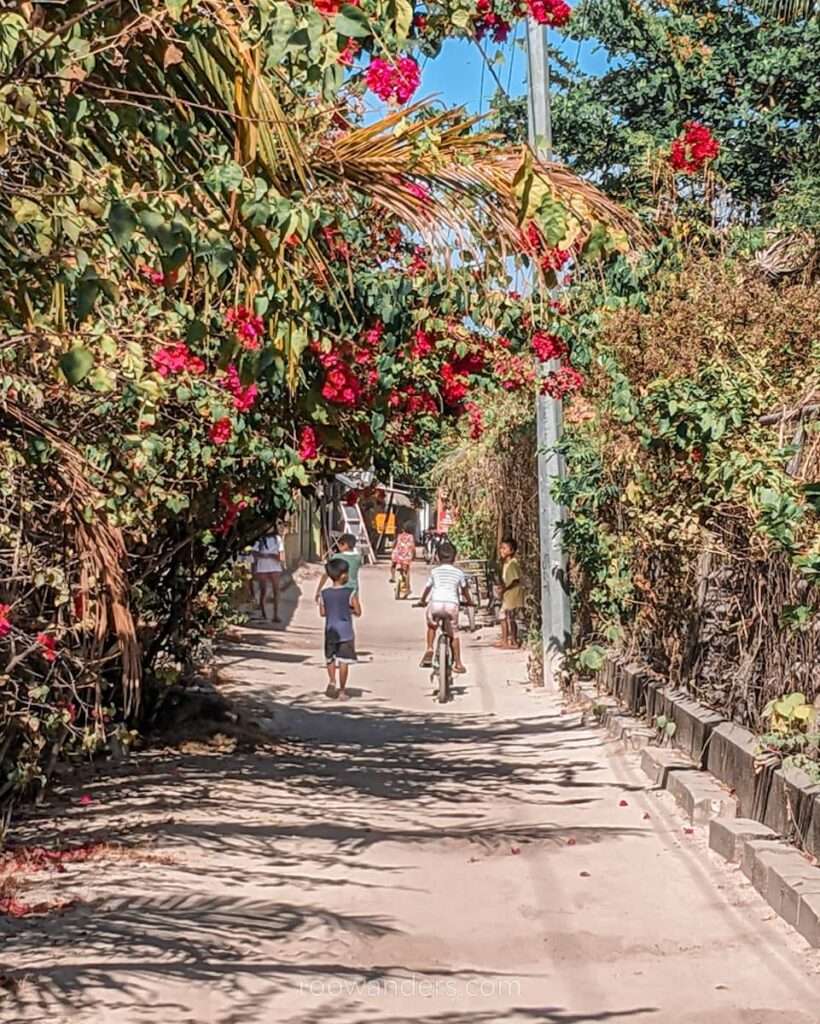
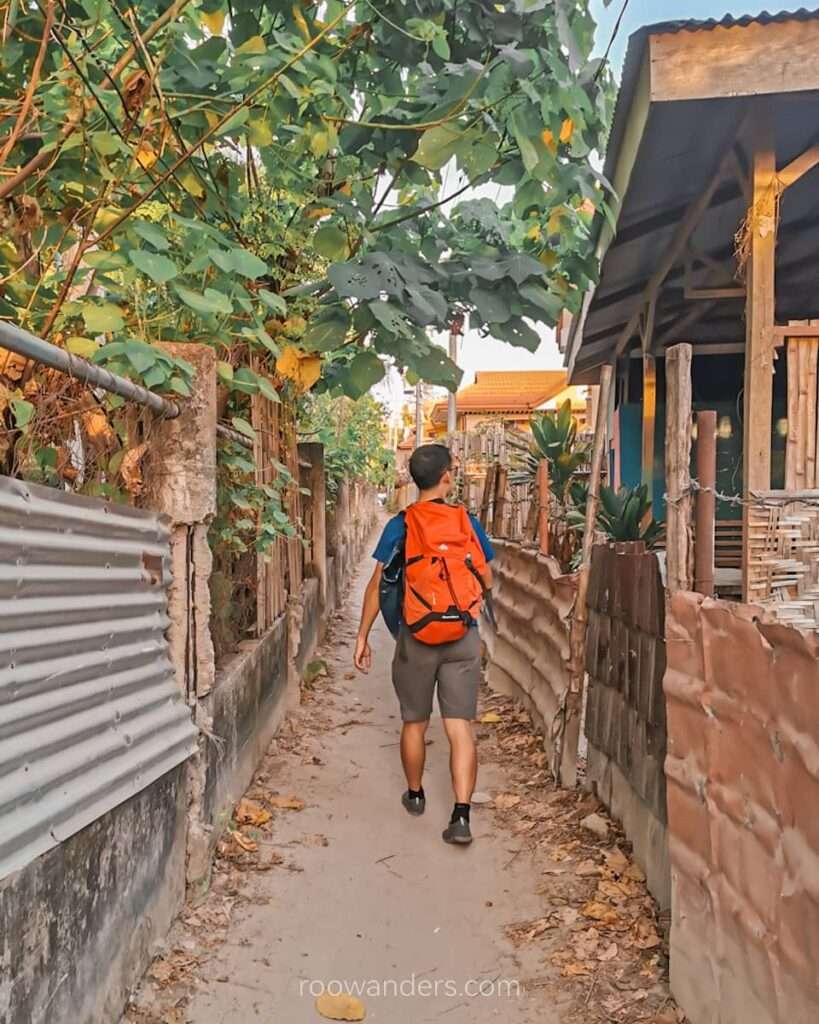
As we left the pier, we were immediately approached by local salesmen on snorkelling or diving tour packages, motor rentals and accommodations. You could ask around before settling on their offers if you haven’t made any plans yet.
A motor is needed to travel beyond southern Malapascua, for instance, if you’d want to visit the lighthouse in the northern part of the island.
Attractions & Activities in Malapascua
Scuba Diving for the Thresher Sharks at Kimud Shoal
Malapascua is famed for the presence of thresher sharks in its vicinity. However, these creatures usually reside in depths of 20 m, so spectating them requires an advanced open-water scuba qualification.
Sharks of any kind never fail to excite scuba divers, so Malapascua was high on our list when we were researching the places to visit in Cebu.
Thresher sharks are known for their long thresher-like tail, hence their name. These big predatory fish are recognised as vulnerable, and rare to spot. They are solitary creatures that feed on schools of fish and are supposedly shy.
For our thresher shark dives, we woke up at sunrise for a boat trip to Kimud Shoal.
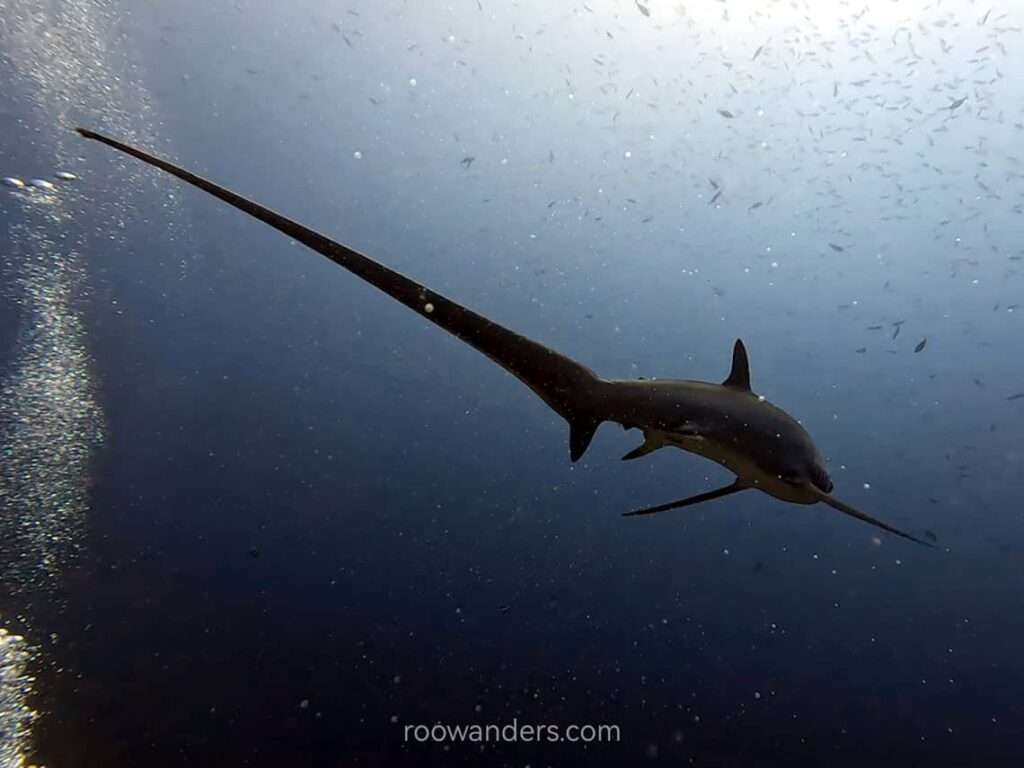
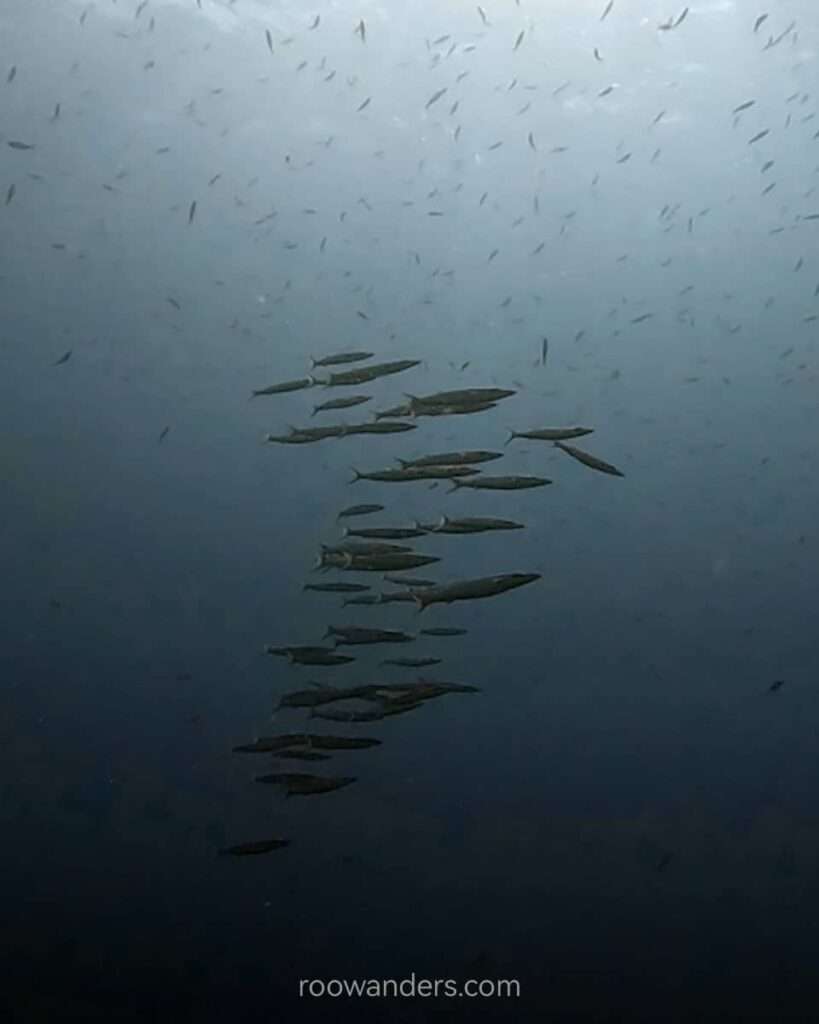
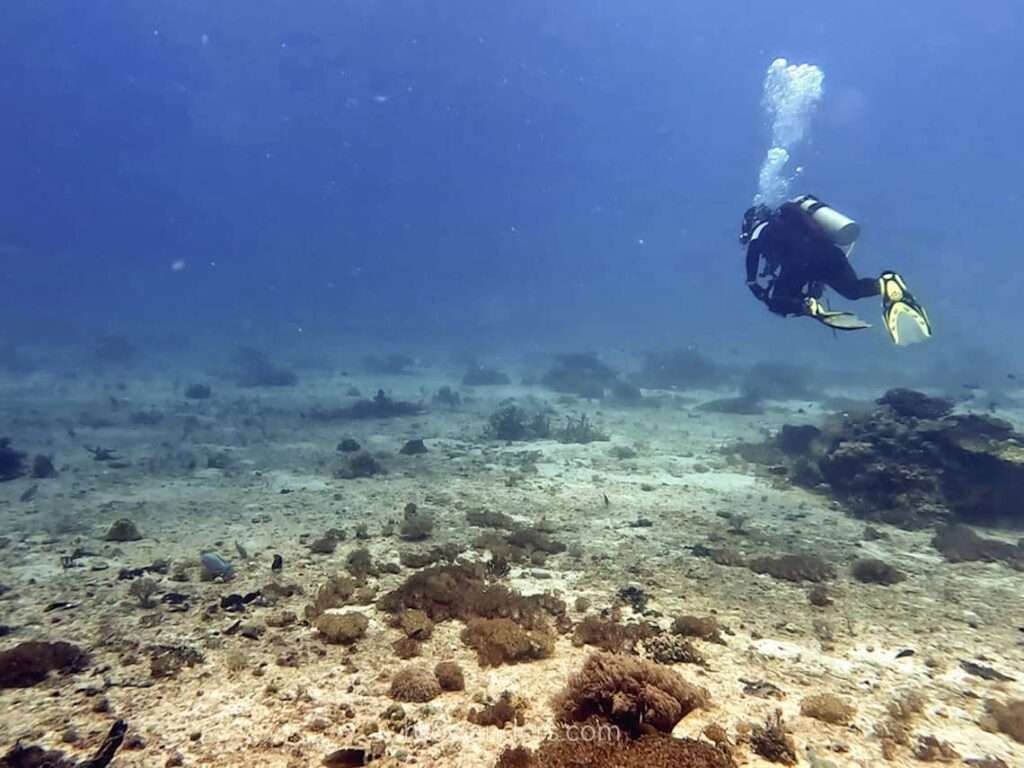
Most blogs/ websites cited Monad Shoal as the dive site for thresher sharks, but the sharks have since hung out at the new place. We saw three thresher sharks in Kimud Shoal, but nothing in Monad Shoal.
Monad Shoal did not feature any sizable schools of fish or interesting corals, which probably explains the relocation of these hungry resident threshers. Our dive guide mentioned the presence of tiger sharks in Monad Shoal, but this really depends on luck.
Check out the underwater tunnels of Gato Island
Gato Island is about an hour’s boat ride from Malapascua, famed for its secludedness, underwater tunnels, and beautiful corals.
While we did not dive around Gato Island due to time constraints, we learnt that past divers have seen beautiful white-tip and black-tip sharks near the cave entrance, blue-ring octopuses, and pygmy seahorses.
However, there are also reports of the currents at Gato Island being stronger, hence more suitable for advanced divers.
Suntan from their beautiful beaches
Malapascua is a relatively hard-to-reach island, so there are plenty of beautiful white beaches for photography, suntanning, or generally enjoying the beachy vibes.
The most famous – read: busy – beach is Bounty Beach, located in the south, and where you’d find many dive shops.
Logan Beach currently houses the informal Malapascua Pier. Despite the number of boats there, the shallow coastal region is still good for snorkelling and walking during low tide.
There are more beaches in the northern part of the island, which as I’ve mentioned, is harder to reach solely by foot. The northern part of the island is also less developed and hence holds its rustic charm. You could expect to have the beaches to yourself with perhaps a few other adventurous travellers like yourself and the local fishermen.
Examples include Lapus-Lapus Beach, Marquetta Beach/ Langob Beach with their iconic twin coconut trees and Bantigue Cove Beach with ruins of a resort destroyed by a 2013 typhoon. Spy the fisherman’s boat or their dried catch at beaches like Gugma Beach and Guimitayan Beach.
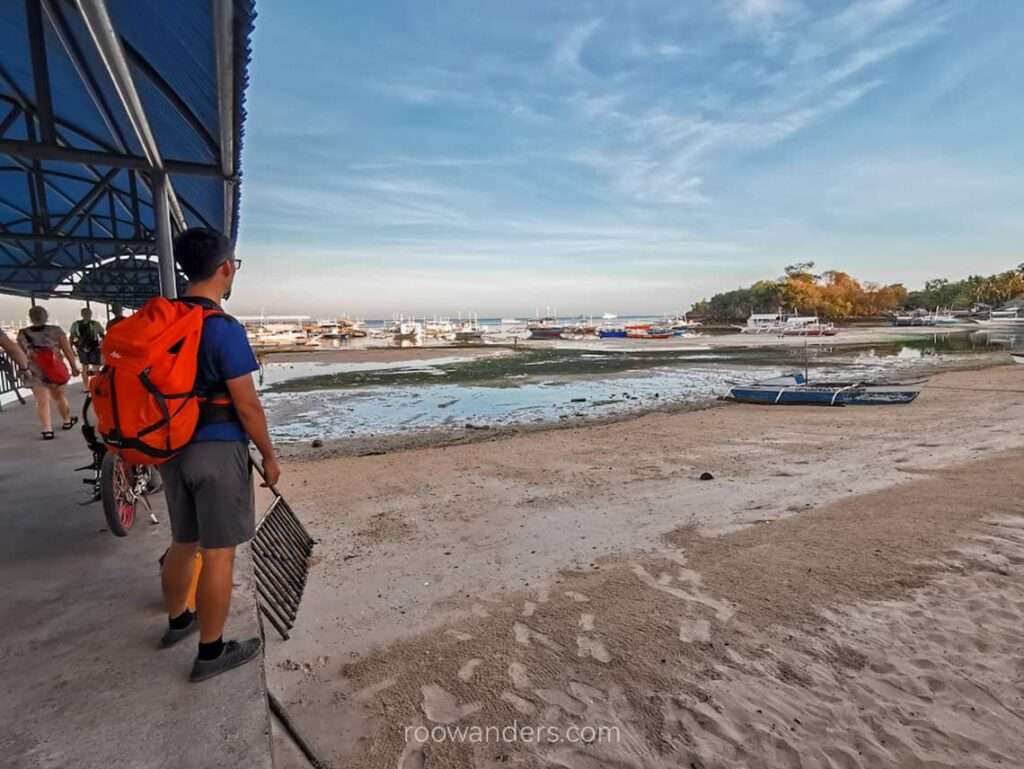
Snorkel near the shores
If you cannot dive, or intend to save money exploring the aquatic world yourself, rent or bring along your snorkelling set.
You could also find a boat or a group of interested snorkelers to join you and explore the sea further away from the coast.
I’m not sure how much that would have cost, but we learnt from a German couple in our accommodation that this was what they did in their two-week (and counting) stay in Malapascua.
Catch the sunset from Malapascua Lighthouse
If you fancy catching a sunset from the lighthouse. The lighthouse also faces a relatively shallow underwater Japanese shipwreck sunk in the previous war. Snorkelers may enjoy spotting or even swimming around the wreck.
Otherwise, divers would enjoy after dusk dives on the reef opposite the lighthouse for the iridescent Mandarin fish.
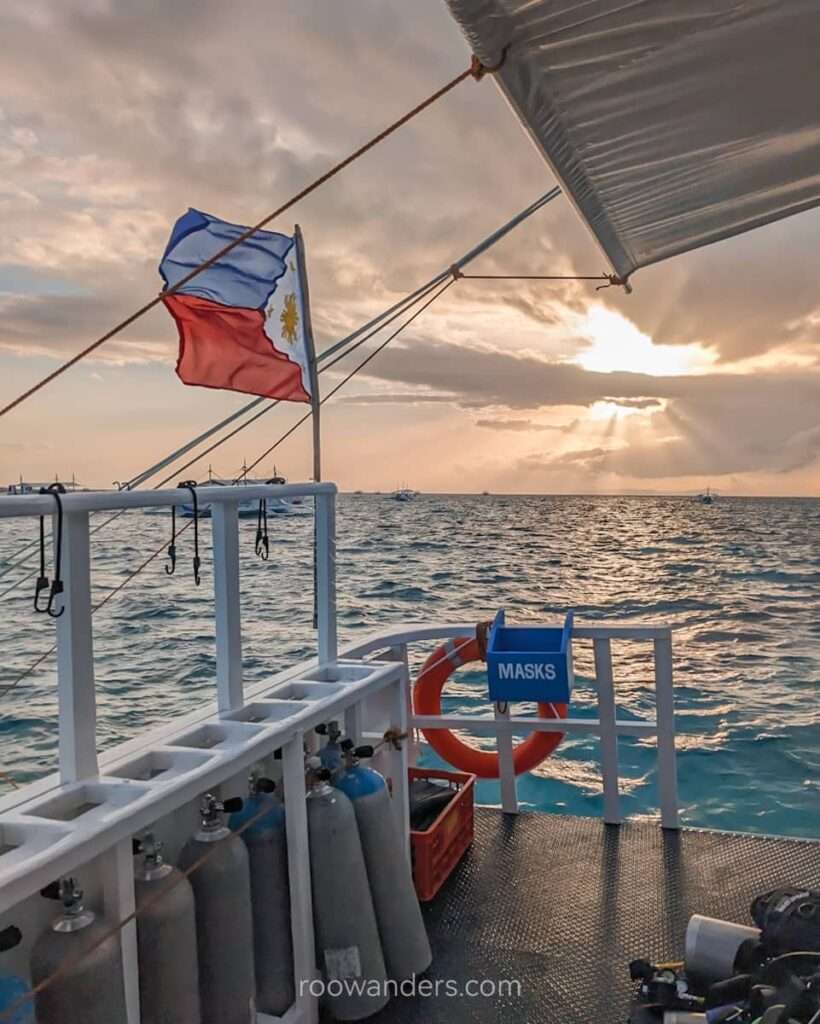
Savour a slice of paradise at Kalanggaman Island
Kalanggaman Island, a sandbar between Cebu and Leyte, is famous for its beautiful white powdery sand, painfully clear blue waters, and rich marine life.
However, getting to Kalanggaman Island can be a pain. It takes about 2 hours by boat from Malapascua. Ask around the local salesmen who will approach you once you hit Malapascua, and they may lead you to someone doing a tour of Kalanggaman Island.
There’s a report saying someone paid P1500 for an organised tour to the island from Malapascua, and some other blogs quoting between P800 to P1000.
There’s also an entrance/ conservation fee of P850 per person, as of Jan 2024, to visit the sand bar.
Places to eat in Malapascua
Almost all lodgings can arrange a meal.
For our trip in Malapascua, we had most of our meals at the Malapascua Island Public Market. There are many eateries in this marketplace with reasonable prices selling BBQ seafood or traditional Filipino fare like adobo, sisig and sinigang.
The accommodation we stayed at has a vegetarian restaurant serving delicious vegetarian mushroom sisig and vegetable curry if you’ve grown tired of greasy, meaty BBQ food.
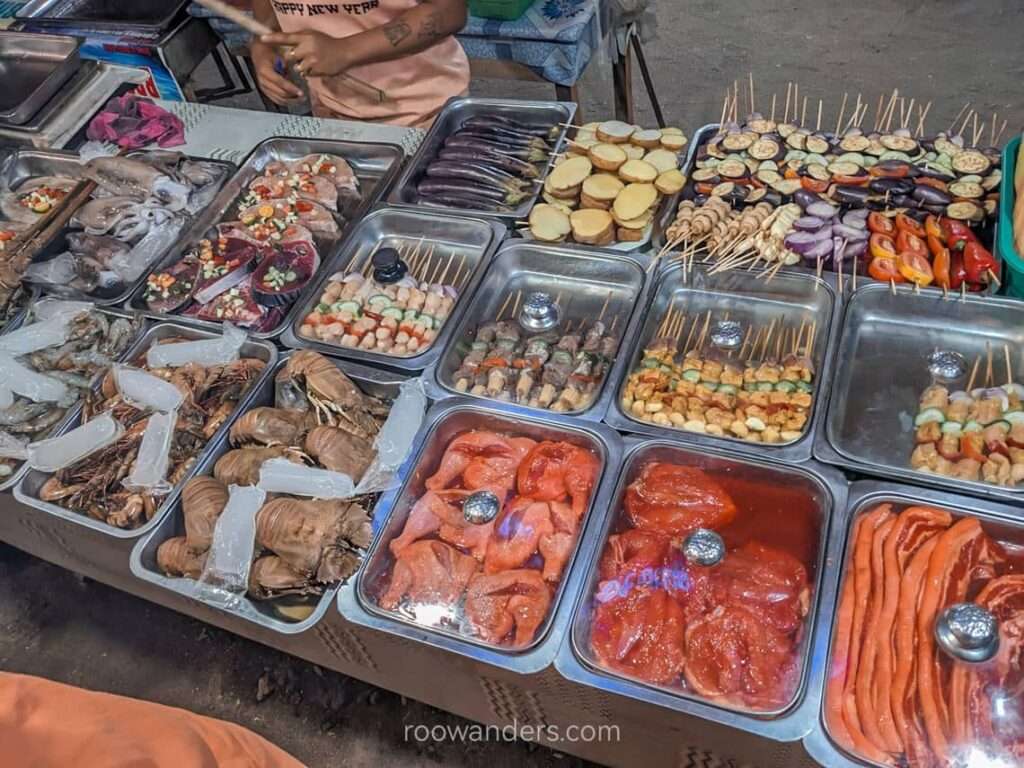
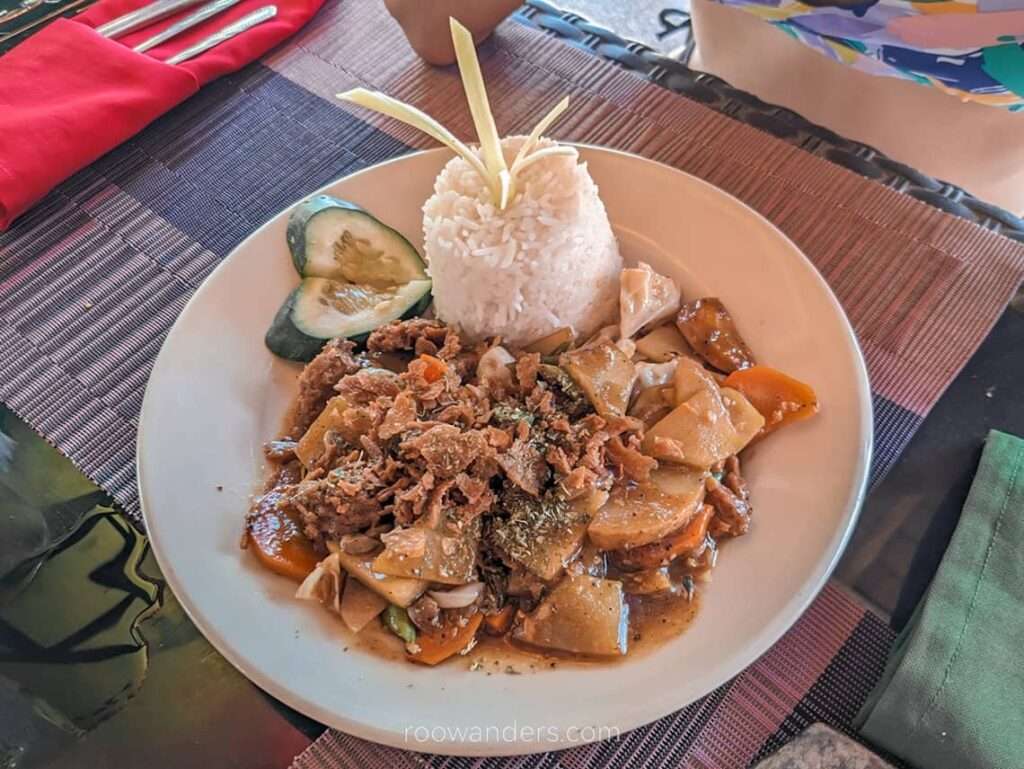
Accommodations in Malapascua
There are plenty of dive resorts with excellent accommodations in Malapascua.
But for all our stays in Cebu, apart from Cebu City, we went with the traditional bamboo huts.
We booked a budget double room – I should say hut – at the Tribal Huts Community. Our hut comes with an ensuite toilet. It is clean and relatively comfortable despite being non air-conditioned as it has a ceiling fan. A mozzie net provides some protection at night from the blood-suckers when there aren’t that many mozzies in Cebu, to begin with. You see more flies in Cebu than mosquitoes.
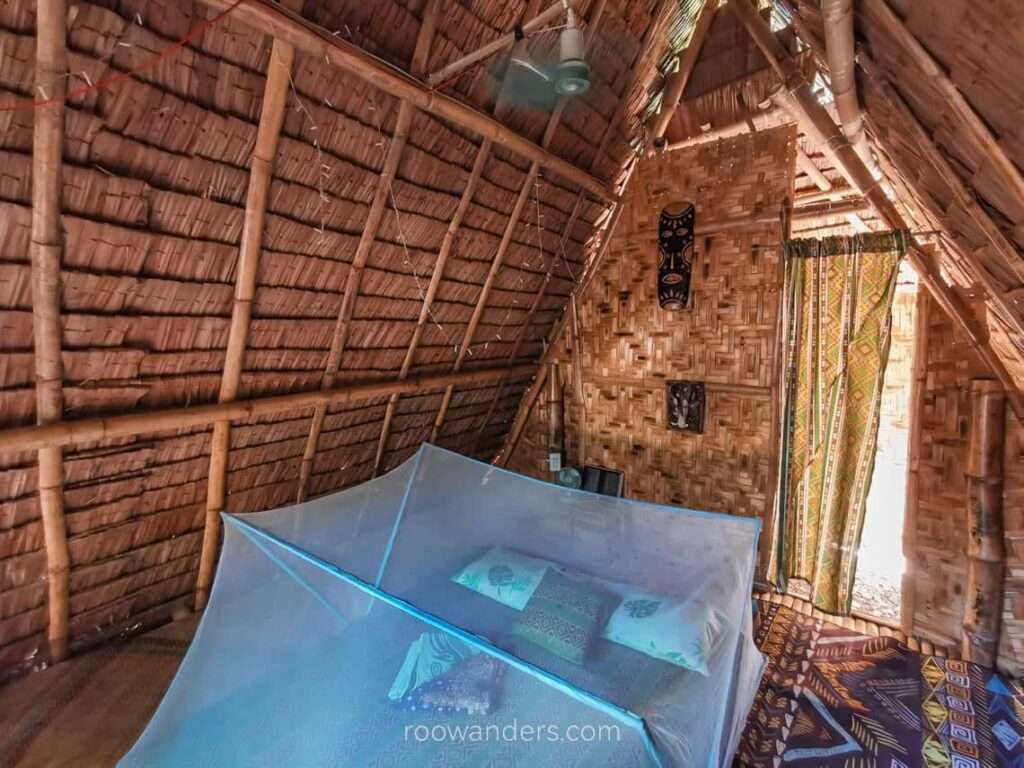
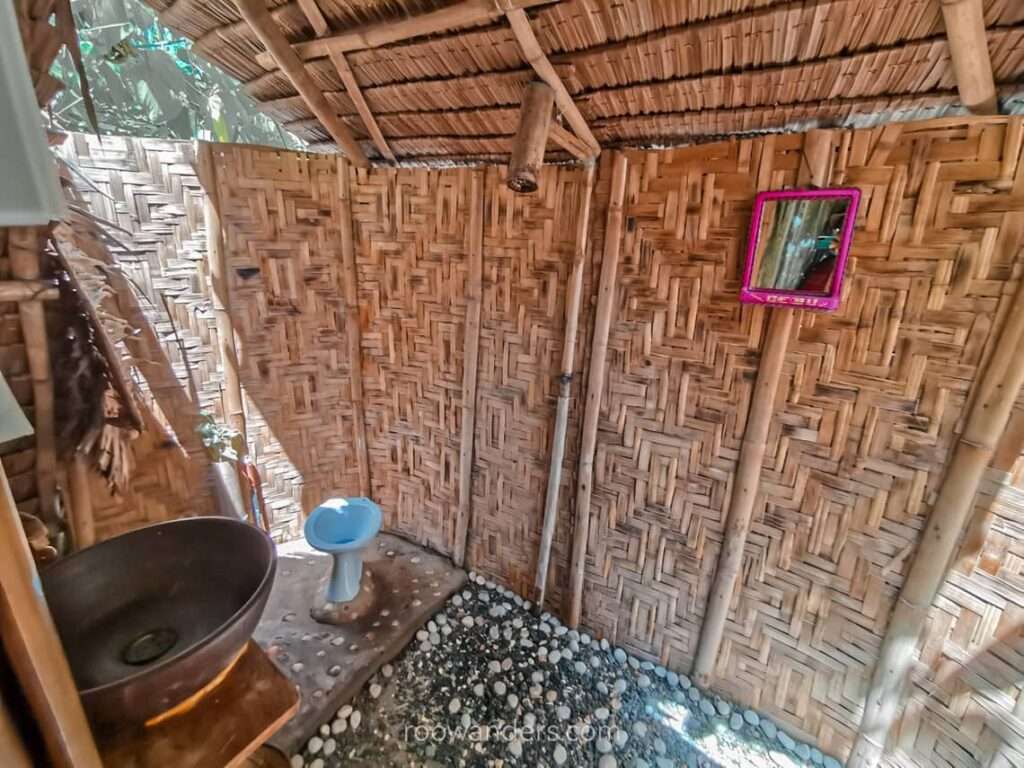
I urge you to consider this place if you do not mind not having an aircon. It’s a good experience for a night or two, and their host is friendly. They have strong wifi and provide free drinking water.
There’s something similar to the Tribal Huts Community up north for those looking to retreat from the busier south. Have a look at Georgia’s Neverland Hostel.
For solo travellers, Malapascua Budget Inn and Threshershack Inn provide affordable dorm beds near the pier.
Those looking for budget air-conditioned bliss can check out the Malapascua Garden Resort, and the Blue Corals Beach Resort. They are highly rated for their location at the pier and good hospitality.
Couples on a honeymoon or retreat! Have a look at the rooms of Buena Vida Resort and Spa! And if you’d like to sip a cuppa while facing the sea, get yourself a private cottage at Tepanee Beach Resort.
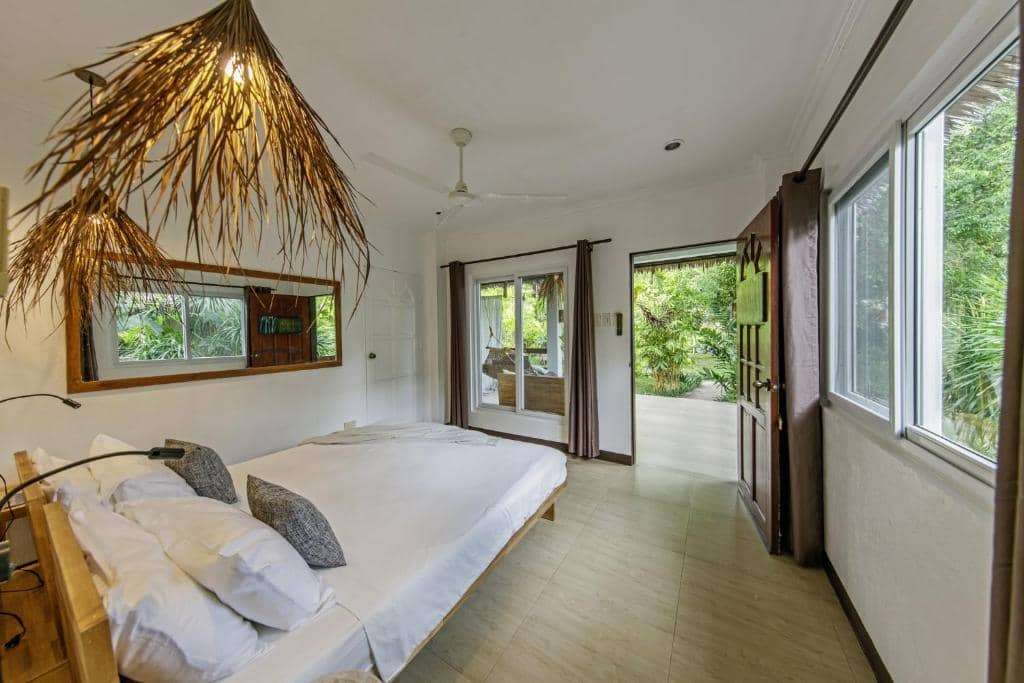
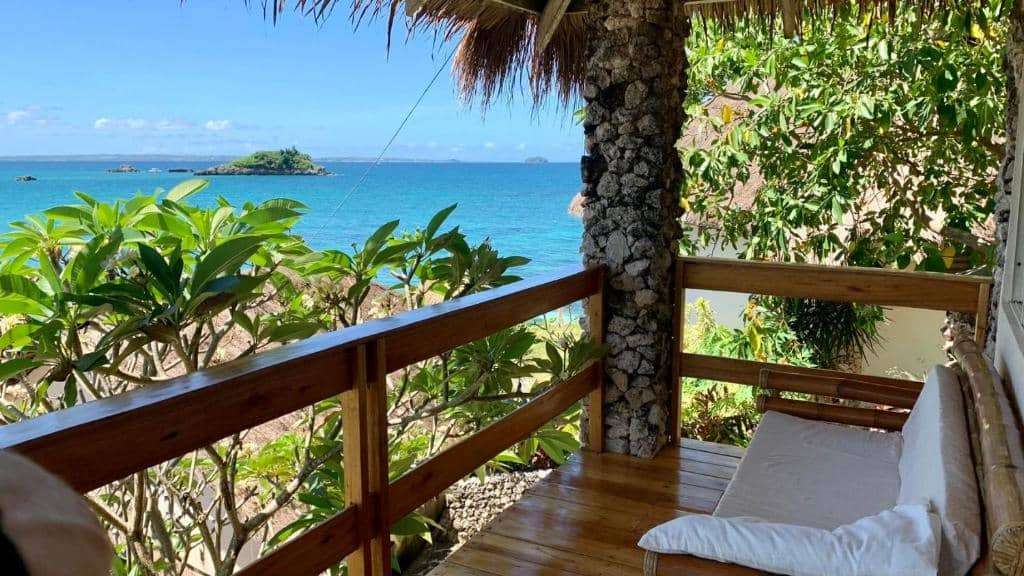
But for the most pampering and luxurious stay, go with Angelina Beach Resort by the pier. They have beautiful decorations, an excellent breakfast, and a very spacious room. Someone also commented on their heavenly massages.
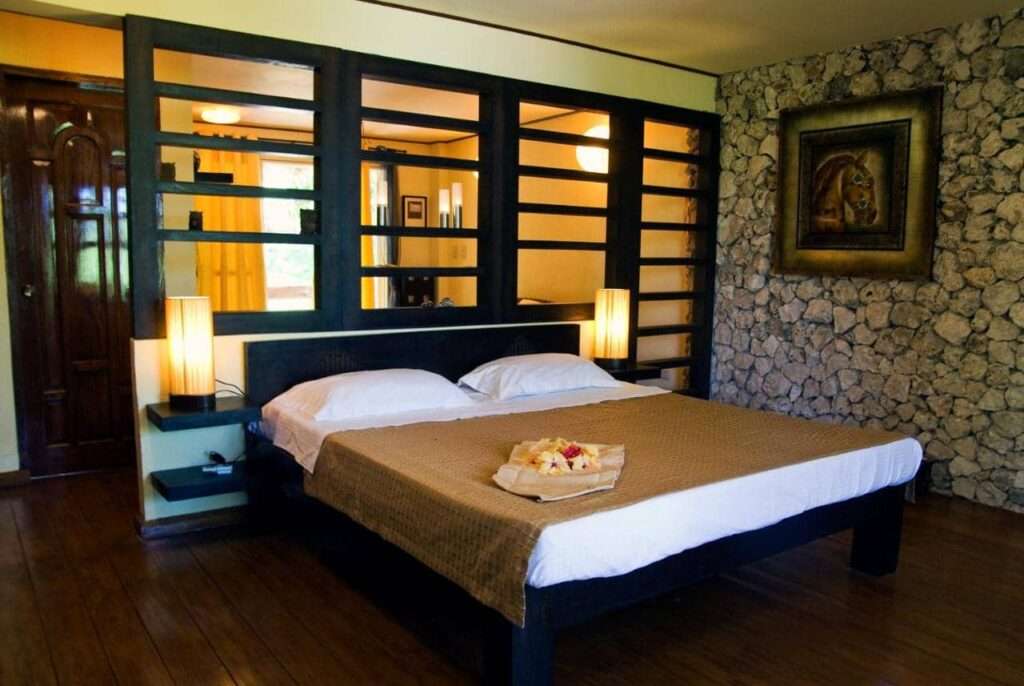
Travel beyond Malapascua
Get back to Cebu City if you’d like to travel to other parts of Cebu Island.
Cross the sea on another ferry ride to Bohol for its iconic chocolate hills and alien-looking tarsiers. Bohol is another island many times bigger than Malapascua. It could take some days if you intend to cover the whole island and throw in some scuba dives. If you find planning the logistics painful, go with guided tours. We DIY-ed it since my partner knows how to ride a motor. ✨
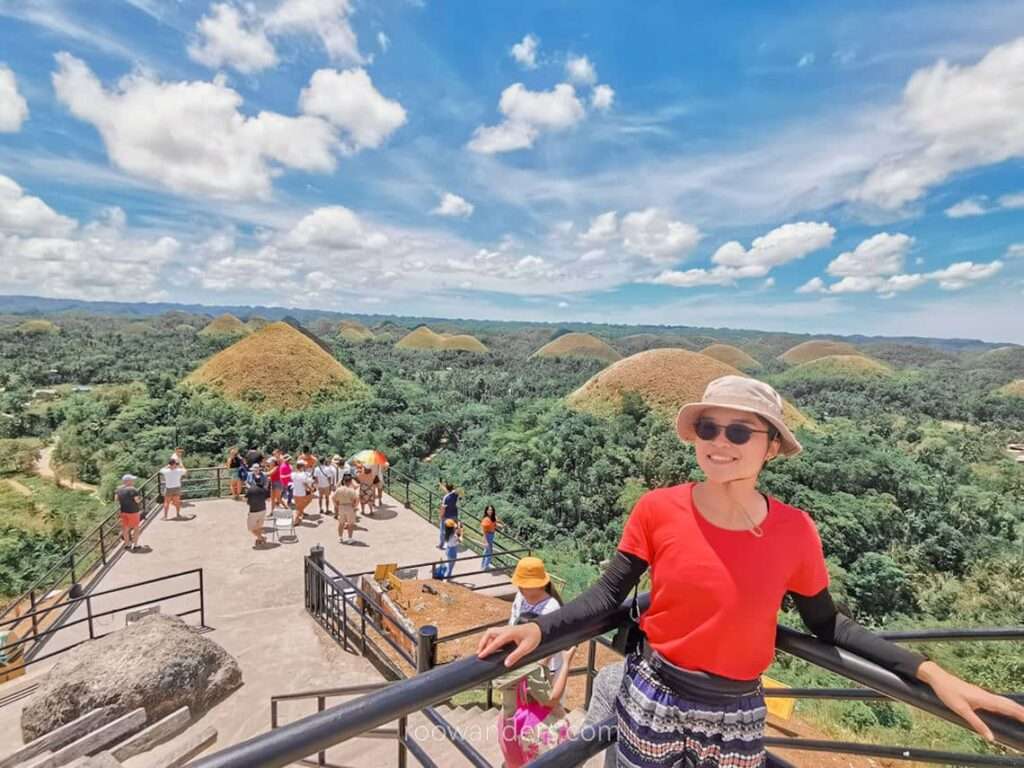
Travel south from Cebu City to Moalboal for their sardines, more scuba diving and get your adrenaline fix canyoneering at the Kawasan Falls. Moalboal – the part where tourists go – is a chic place with vegan eateries, Korean BBQs and chic cafes by the beach. You could actually squeeze the sardine run and canyoneering into one long day from Cebu City with this tour if you’re short on time and want to see and do everything.
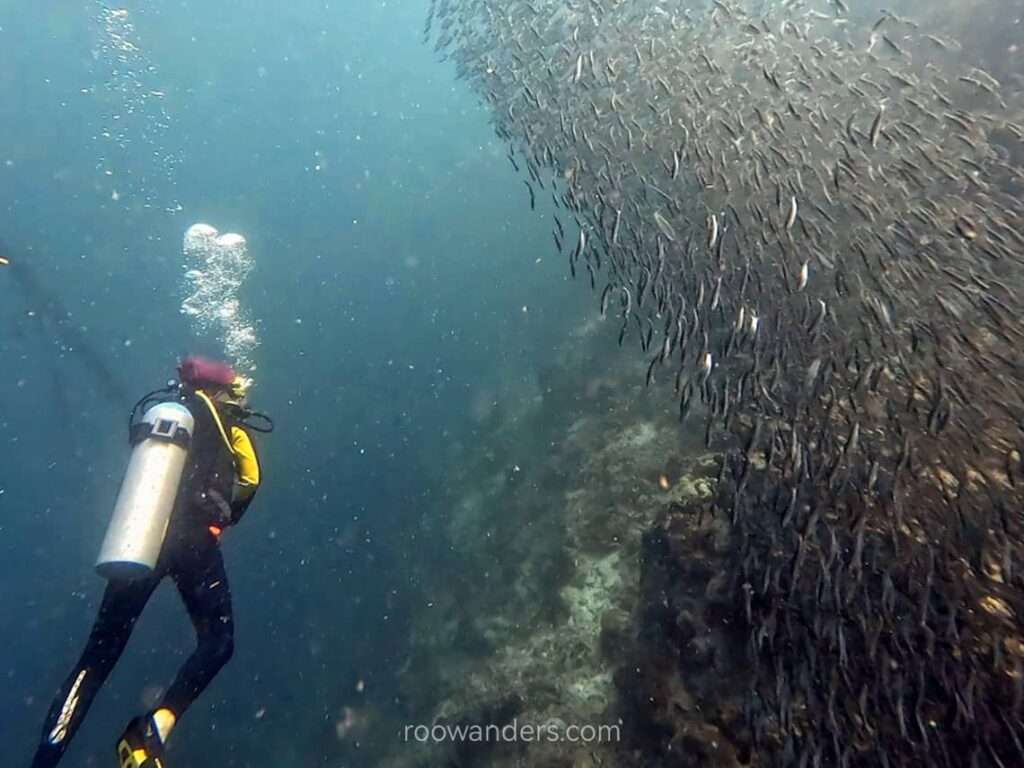
Go all the way south of Cebu Island and catch another ferry to enchanting Siquijor Island – home of spectacular waterfalls, caves, and more snorkelling or diving.
Or you could take the ferry over to other bigger adjacent islands of Cebu like Leyte and Negros Island.
Cebu has another tourist attraction in Oslob, south of Cebu City, famous for swimming with whale sharks. However, this attraction remains controversial as the whale sharks were lured to be there by food.
Our Expenses
The bulk of our expenses in Malapascua went into diving. We spent P6250 per person, including gear for 3 dives.
A meal in Malapascua averages around P250 per person, not including alcohol.
As for accommodation, we paid P1720 for two in a double room for two nights.
Transport to reach and leave Malapascua for Cebu City costs us P1240 per person.
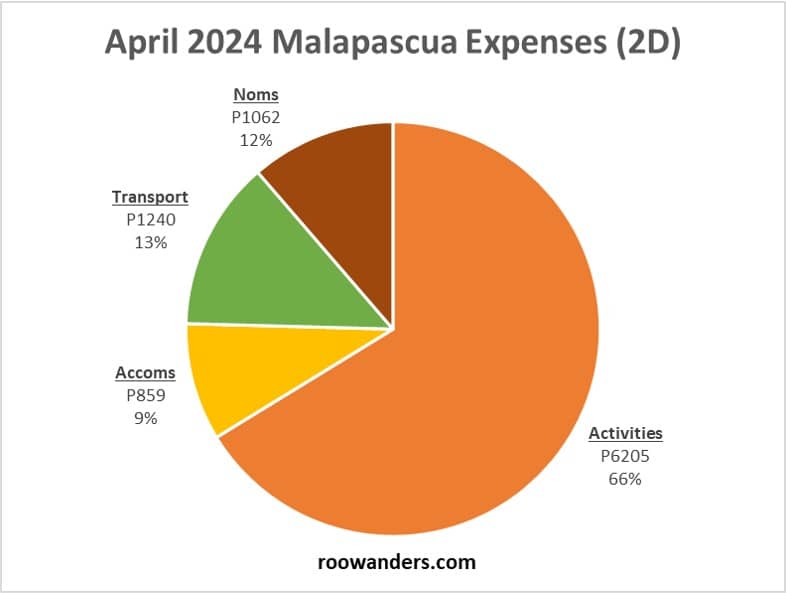
Conclusion/ Rambles
I enjoyed my stay in Malapascua, despite the long travelling time that came immediately after our red-eye budget flight from Singapore to Cebu.
We slept our first half-day away due to the immense heat and tiredness. Who cares about the initial plan of getting a motor to catch the first Cebu sunset? Too ambitious under the punishing heat!
The dives on our second day were beautiful with extraordinary clarity. We could see the water’s surface despite being at a depth of 20 m!
Dedicating more time in Malapascua for diving would have been great since our three dives were all around Kimud Shoal and Monad Shoal, focusing on the large pelagic fishes only. With more time, we could even check out the underground tunnels of Gato Island and the northern seas of Malapascua!
The only issue I have is the food, which can be pretty limited if you are a vegetarian or not a big meat eater. There aren’t a lot of vegetable options to choose from! Eating too much greasy BBQ does not help when the weather is hot and dusty. Too many mangoes also contribute to heatiness.
Nevertheless, if you are a diver who loves sharks and doesn’t mind the long journey to get to Malapascua, then make sure you put this island on your list! Don’t know how to scuba dive? You could sample a taste of scuba diving with Discover Scuba Diving, or get licensed in Malapascua!
